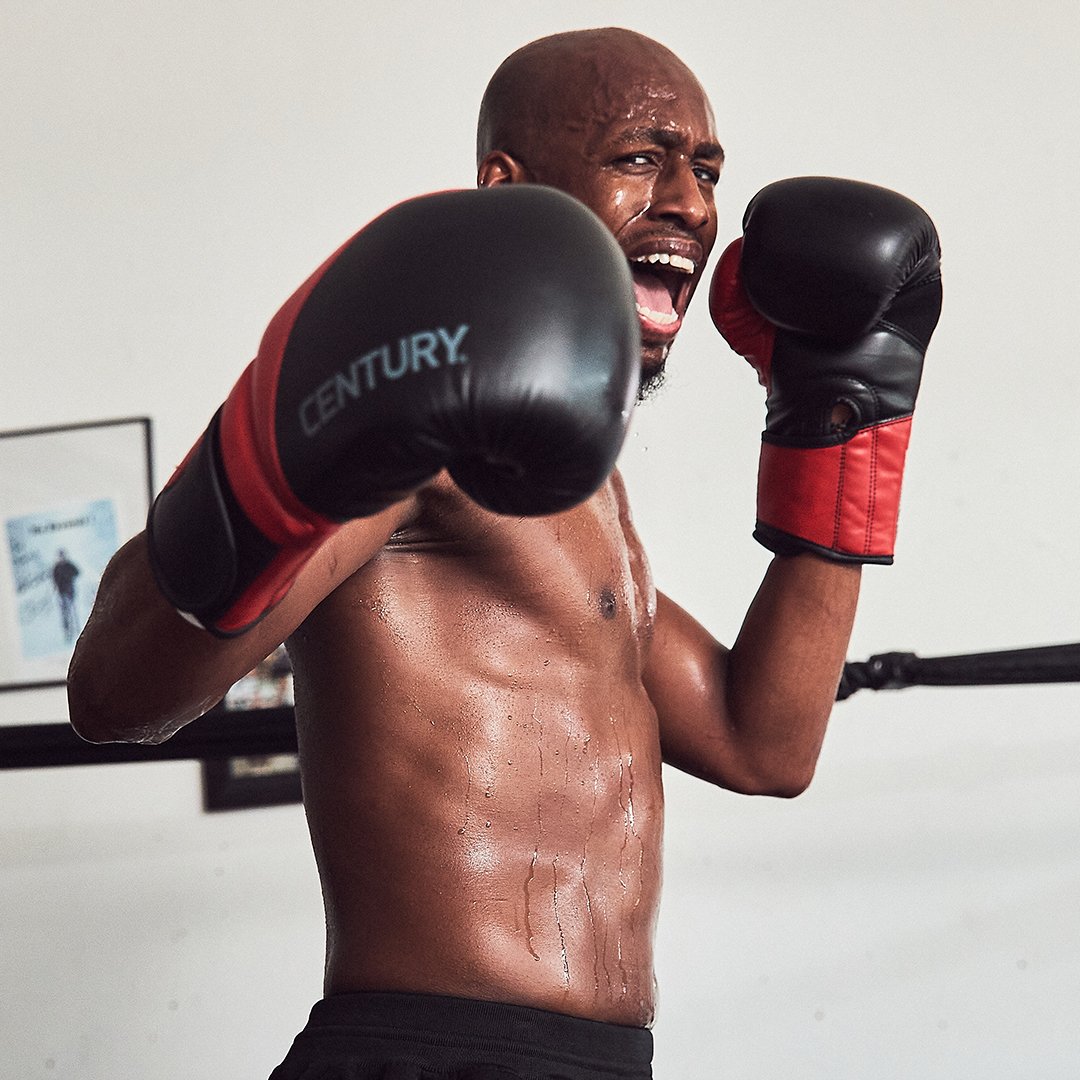Kickboxer,Gear,Levels 👇⏬
Kickboxer: A dynamic and exhilarating combat sport that blends elements of traditional martial arts with modern techniques. Originating in Japan in the 1960s, kickboxing has evolved into a popular form of stand-up fighting practiced worldwide. Characterized by powerful kicks, punches, knee strikes, and elbow strikes, kickboxers engage in intense bouts of athleticism and skill, aiming to outmaneuver and defeat their opponents within the confines of the ring. With its emphasis on strength, speed, and agility, kickboxing offers both physical fitness and mental discipline to its practitioners, making it a compelling pursuit for athletes and enthusiasts alike.
Kickboxing Gear
Kickboxing gear encompasses a range of equipment designed to enhance performance, protect against injury, and ensure comfort during training and competition. Here are some essential pieces of kickboxing gear:
- Gloves: Kickboxing gloves are essential for protecting the hands and wrists during striking techniques. They come in various weights and styles, including boxing gloves and MMA gloves, depending on personal preference and training goals.
- Hand Wraps: Hand wraps provide additional support to the hands and wrists, helping to stabilize the joints and reduce the risk of injuries such as sprains or fractures during impact.
- Shin Guards: Shin guards offer protection to the shins and insteps, shielding against kicks and strikes while sparring or during competitions. They are typically made of durable materials such as foam padding and synthetic leather.
- Mouthguard: A mouthguard is crucial for safeguarding the teeth, jaw, and gums from impact during kickboxing training or fights. It helps absorb and distribute the force of blows to minimize the risk of dental injuries.
- Headgear: Headgear provides protection to the head and face, reducing the risk of cuts, bruises, and concussions during sparring or competitive matches. It is especially important for beginners or those engaging in full-contact training.
- Groin Protector: Also known as a cup or groin guard, this piece of equipment protects the groin area from accidental strikes during training or fights, ensuring safety and comfort for male kickboxers.
- Kickboxing Shorts: Kickboxing shorts are specially designed for freedom of movement and comfort during training and competition. They are typically lightweight, breathable, and feature a loose fit to facilitate kicking and striking techniques.
- Ankle Supports: Ankle supports or braces provide stability and support to the ankles, reducing the risk of sprains or twists during intense workouts or sparring sessions.
- Training Pads/Targets: Training pads or targets are used by coaches or training partners to simulate striking targets during pad work, helping kickboxers improve accuracy, timing, and technique.
- Equipment Bag: An equipment bag is essential for transporting and storing kickboxing gear, keeping it organized and easily accessible before, during, and after training sessions or competitions.
Investing in quality kickboxing gear is essential for safety, comfort, and optimal performance during training and competition. It is essential to choose gear that fits well, offers adequate protection, and meets the specific needs and preferences of individual kickboxers.

Kickboxing Academy
A kickboxing academy serves as a dedicated training facility where individuals can learn and practice the art of kickboxing under the guidance of experienced instructors. Here’s a brief introduction to what a kickboxing academy typically offers:
- Structured Classes: Kickboxing academies typically offer structured classes catering to individuals of all skill levels, from beginners to advanced practitioners. These classes may include instruction in basic techniques, combinations, footwork, defensive maneuvers, and conditioning drills.
- Experienced Instructors: At a kickboxing academy, instructors are typically experienced practitioners with a background in kickboxing or other martial arts disciplines. They provide personalized instruction, feedback, and encouragement to help students develop their skills and achieve their fitness goals.
- Safe Training Environment: Kickboxing academies prioritize safety, providing a controlled and supportive training environment where students can learn and practice without fear of injury. Equipment such as gloves, hand wraps, shin guards, and headgear may be provided to ensure safety during training sessions.
- Focus on Technique and Fitness: In addition to teaching kickboxing techniques, academies often focus on improving overall fitness, including strength, endurance, flexibility, and cardiovascular health. Classes may incorporate a variety of exercises and drills designed to enhance physical conditioning and performance.
- Community and Camaraderie: Kickboxing academies foster a sense of community and camaraderie among students, creating a supportive and motivating atmosphere for learning and growth. Students often form friendships and bonds with fellow practitioners, sharing a passion for kickboxing and fitness.
- Opportunities for Competition: For those interested in taking their training to the next level, kickboxing academies may offer opportunities to participate in competitions or sparring events. These events allow students to test their skills in a controlled and competitive setting, further enhancing their development as martial artists.
Overall, a kickboxing academy provides a comprehensive and enriching experience for individuals interested in learning kickboxing, improving their fitness, and pursuing their martial arts goals. Whether you’re a beginner looking to try something new or an experienced practitioner seeking to refine your skills, a kickboxing academy offers something for everyone.
Kickboxing Classes
Kickboxing classes offer an engaging and effective way for individuals to learn the techniques, improve their fitness, and experience the benefits of this dynamic martial art. Here’s what you can typically expect from kickboxing classes:
- Instruction in Technique: Kickboxing classes are led by experienced instructors who provide step-by-step instruction in fundamental techniques such as punches, kicks, knee strikes, and defensive maneuvers. Classes often begin with a warm-up and then progress to technique drills and combinations.
- Cardiovascular Conditioning: Kickboxing classes provide a high-intensity cardiovascular workout that helps improve endurance, stamina, and overall fitness. Through a combination of dynamic movements, striking drills, and interval training, participants can burn calories, boost metabolism, and increase cardiovascular health.
- Strength and Conditioning: In addition to cardiovascular conditioning, kickboxing classes incorporate strength and conditioning exercises to build muscular strength, power, and agility. These exercises may include bodyweight exercises, resistance training, and plyometric drills to enhance functional fitness and athletic performance.
- Bag Work and Pad Work: Many kickboxing classes include bag work and pad work, where participants practice striking techniques on heavy bags or focus pads with a partner. This allows students to develop speed, accuracy, and power while improving their timing and coordination.
- Sparring and Partner Drills: Some kickboxing classes may include controlled sparring sessions or partner drills, where students have the opportunity to apply their skills in a controlled and supervised setting. Sparring allows participants to practice defensive techniques, footwork, and strategy while gaining confidence and experience.
- Flexibility and Mobility: Kickboxing classes often incorporate stretching and mobility exercises to improve flexibility, range of motion, and joint health. Warm-up and cool-down routines may include dynamic stretching, static stretching, and mobility drills to prevent injuries and enhance recovery.
- Fun and Motivating Atmosphere: Kickboxing classes offer a fun and motivating atmosphere where participants can challenge themselves, set goals, and track their progress over time. Whether you’re a beginner or an experienced practitioner, classes are designed to accommodate all fitness levels and abilities.
Overall, kickboxing classes provide a comprehensive and rewarding workout experience that combines cardiovascular conditioning, strength training, skill development, and stress relief. With consistent attendance and dedication, participants can experience improvements in physical fitness, self-defense skills, and overall well-being.
Kickboxing Levels
Kickboxing typically follows a structured system of levels or belts to indicate a student’s progress and proficiency in the art. While the specific level names and requirements may vary between different schools and organizations, here is a general overview of the levels commonly found in kickboxing:
- Beginner Level (White or Yellow Belt): At the beginner level, students learn the foundational techniques and basic movements of kickboxing. This includes stances, footwork, punches, kicks, and defensive maneuvers. Emphasis is placed on developing proper form, balance, and coordination.
- Intermediate Level (Blue or Green Belt): In the intermediate level, students continue to build upon the techniques learned at the beginner level and begin to incorporate more advanced combinations and strategies. They may also start sparring in a controlled and supervised setting to practice applying their skills in simulated combat situations.
- Advanced Level (Brown or Red Belt): At the advanced level, students refine their techniques, deepen their understanding of strategy and tactics, and work towards mastering the art of kickboxing. This may include advanced combinations, counter-attacks, defensive tactics, and situational awareness.
- Black Belt Level: The black belt level represents the highest level of proficiency in kickboxing and is typically achieved through years of dedicated training, skill development, and mastery of the art. Black belt holders demonstrate exceptional technique, physical fitness, mental discipline, and leadership within the martial arts community.
It’s important to note that the belt system may vary between different styles of kickboxing and between different organizations. Some schools may have additional levels or belt colors, while others may follow a different ranking system altogether. Additionally, the criteria for advancing to the next level may include factors such as attendance, skill demonstrations, sparring ability, and overall dedication to training.
Overall, the belt system in kickboxing serves as a roadmap for students to track their progress, set goals, and strive for continuous improvement as they advance through the ranks of the martial art.

Kickboxing Gloves
Kickboxing gloves are essential equipment for practitioners of this dynamic martial art, providing protection for the hands and wrists during training and competition. Here are some key features and considerations when choosing kickboxing gloves:
- Size and Weight: Kickboxing gloves come in various sizes and weights, typically ranging from 8 ounces to 16 ounces or more. The size and weight of the gloves you choose will depend on factors such as your body weight, hand size, and training goals. Heavier gloves offer more padding and protection, while lighter gloves are preferred for speed and agility training.
- Padding and Protection: Look for kickboxing gloves with adequate padding and protection to cushion the impact of strikes and reduce the risk of injury to the hands and wrists. Quality gloves feature multi-layered foam padding, reinforced knuckles, and wrist support to absorb shock and distribute force evenly.
- Closure System: Kickboxing gloves may have different closure systems, including Velcro straps, lace-up closures, or hybrid designs. Velcro straps offer convenience and ease of use, allowing for quick adjustments and a secure fit. Lace-up closures provide a custom fit and additional wrist support but require assistance to put on and take off.
- Material and Construction: Choose kickboxing gloves made from high-quality materials such as genuine leather or synthetic leather for durability and longevity. Double stitching and reinforced seams enhance durability and prevent premature wear and tear, ensuring that your gloves withstand the rigors of training and sparring.
- Thumb Attachment: Some kickboxing gloves feature an attached thumb design, where the thumb is sewn into the glove to prevent accidental eye gouging or thumb injuries. This design offers added safety and stability during training and sparring sessions.
- Breathability and Comfort: Look for kickboxing gloves with breathable materials and ventilation features to keep your hands cool and comfortable during intense workouts. Moisture-wicking liners and perforated palm panels help prevent sweat buildup and maintain airflow, reducing the risk of odor and discomfort.
- Brand and Reputation: Choose kickboxing gloves from reputable brands known for their quality, craftsmanship, and commitment to safety. Research customer reviews and ratings to ensure that you’re investing in gloves that meet your needs and expectations.
By considering these factors and choosing kickboxing gloves that fit well, offer adequate protection, and suit your training preferences, you can enjoy a comfortable and safe experience while practicing kickboxing.

If you’re interested in combat sports equipment like this, visit my website.




3 Comments